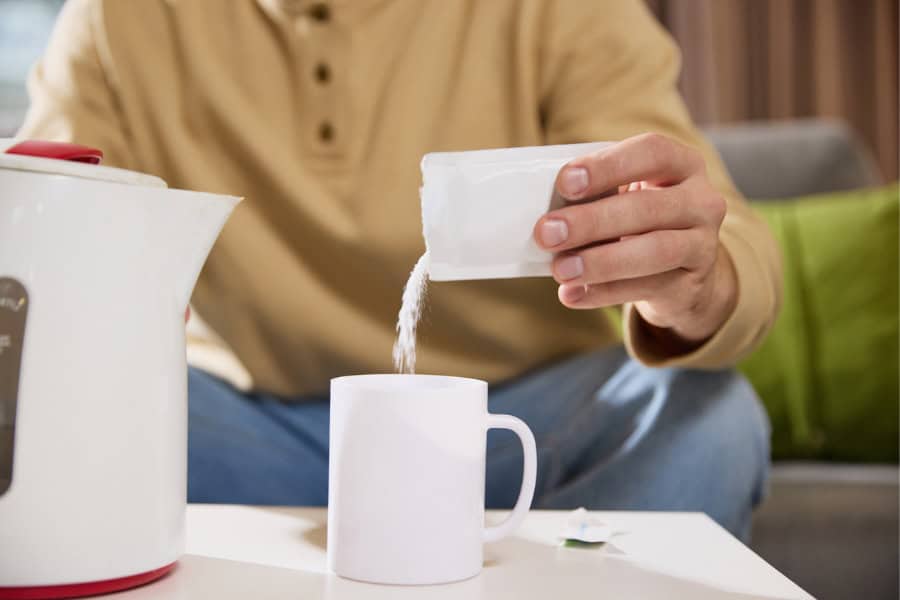Many people today struggle with something called dysphagia. That just means they have trouble swallowing.
If you or someone you care for deals with this, I know how stressful it can feel when every sip or bite feels risky.

Seniors are often told to drink more water, but if they have dysphagia, that advice can actually be dangerous.
So what can you do?
SimplyThick has options that can really help. These thickeners slow down how quickly liquid moves through the digestive tract so you or your loved one can swallow more safely.
Still, it’s important to use the right amount.
Too little thickener won’t make a difference, and too much can make the texture unpleasant or even hard to swallow.
So how do you know what’s right when you’re preparing food for someone with dysphagia?
The Benefits of Food Thickeners
Thin liquids move too quickly through the throat and digestive tract.
That speed is what can cause coughing or choking in people with swallowing problems.
I’ve seen how easily liquid can go down the wrong way, and that’s when the risk of aspiration pneumonia goes up.
By thickening drinks or foods, you can slow that flow and make swallowing easier and safer.
Thicker liquids give the person more control, so you can feel more confident during mealtimes.
Why Caregivers Struggle to Find the Right Balance
If a drink stays too thin after thickening, it’s still a choking hazard.
But if it’s too thick, the person might not be able to swallow it comfortably. Or at all.
I’ve talked to many caregivers who say the hardest part is getting the consistency right every time.
Sometimes it turns out lumpy or separates after sitting for a while.
You have to test and adjust until it feels right for each food or drink.
It helps to start with liquids that are cold or at room temperature.
Mixing works better that way, and I like using a whisk or shaker to get a smoother texture.
Once mixed, let the liquid sit for a minute or two so the thickener can do its job.
You can even check the texture using an IDDSI funnel to see if it matches the level your healthcare provider recommended.
Tips When Preparing Foods and Liquids
One big challenge is that many people don’t like how thickened foods or drinks feel.
You might hear, “It tastes weird,” or “It’s too thick.”
That’s totally normal, and just think when we’re trying to get the right consistency in pudding, as a relatable example.
I’d suggest starting with drinks that are naturally thicker, like smoothies or nectar juices.
And many caregivers I’ve met find that gum-based thickeners often taste smoother than starch-based ones.
If you’re caring or cooking for someone, always follow the plan from their swallowing specialist or speech-language therapist.
They’ll guide you on the right consistency level for each meal or drink.
You might also notice that foods or beverages keep thickening after you’ve prepared them, especially with starch-based products.
When that happens, try making smaller portions or chilling them slightly to slow that process.
It can take time to find what works best, but I promise it gets easier with practice.
The right thickener can make a big difference! It can help your loved one eat safely while keeping their independence and dignity.
And if you’re ever unsure, reach out to their medical team.
They’re there to help you with advice, adjustments, and support so you can feel confident every time you prepare a meal.
- The 12 Best Kombu Substitutes for Your Favorite Recipes - December 8, 2025
- Kitchen Efficiency: How Reducing Fry-Oil Costs Improves Operations - December 8, 2025
- A Grill for Everybody This Black Friday - November 24, 2025

